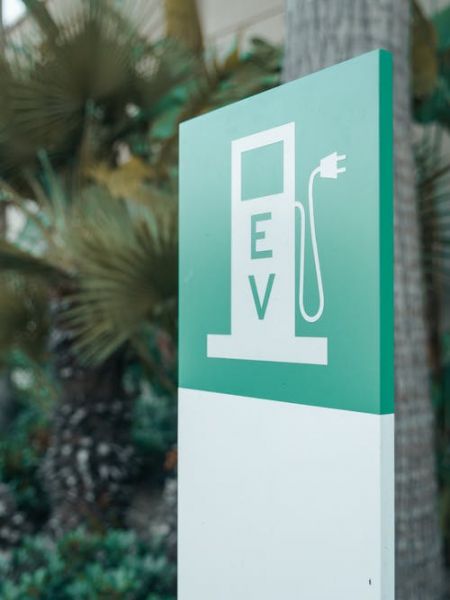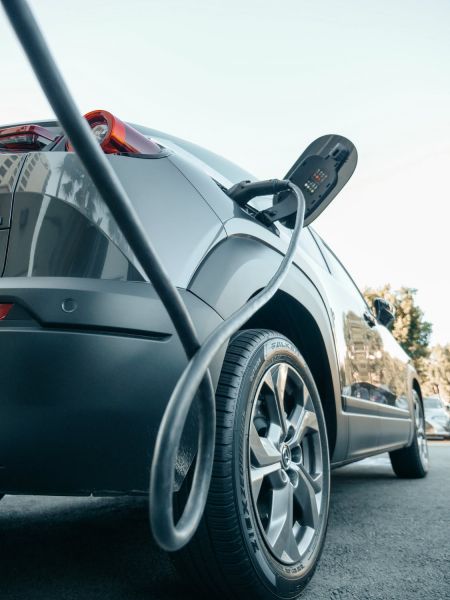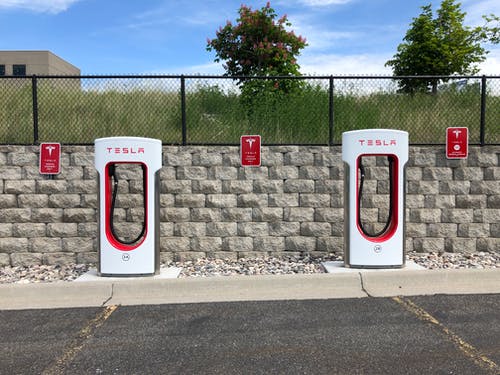Electric Leasing Guide
New to the electric car leasing world? It can be a bit overwhelming reading about electric cars, and with the arrival of new electric vehicle technology comes a lot of technical jargon.
But not to worry! With our electric car leasing guide, you will master the lingo and understand how electric and hybrid cars work. You will also find out whether leasing an electric or hybrid vehicle is for you.
Electric Car Jargon 2024!
EV
You got it; EV means Electric Vehicle. One that's not exclusively powered by fossil fuel.
BEV
This is the same as an EV but stands for Battery Electric Vehicle; basically, a vehicle that is 100% powered by electricity. All EV's will have an electric battery, so let's call them all EV's to keeps things simple.
ICE
This is an Internal Combustion Engine fuelled purely by petrol or diesel and does not have an electric motor. In short, an ICE is not an electric car.
(ICE is also known as In-Car Entertainment, but today it is Internal Combustion Engine.)
PHEV
This is a Plug-In Hybrid Electric Vehicle. The PHEV is for those crossing over from fossil fuel to electricity, which is why it’s called a Hybrid. It can usually give a 30 miles or so range on pure electric power. Suitable for those making shorter commuter style journeys with much longer runs thrown in.
PHEVs can also be good for business car users as the tax savings can almost be as good as a full EV.
MHEV
These are the Mild Hybrid Electric Vehicles. They work differently from their EV cousins because they do not require a plug-in charge. At the bottom of the EV chain, they usually have a smaller battery that is recharged by the petrol or diesel engine. It still relies heavily on fossil fuel but is assisted by a minor electric drive train.

FCEV
FCEV stands for Fuel Cell Electric Vehicle. Instead of using a heavy battery to hold all that charge, FCEV uses Hydrogen tanks, which are not as heavy. The tank then mixes hydrogen with oxygen to create electricity which feeds the electric motor. A battery is also present to help with harvesting energy from coasting wheels.
There is a lot to like about this smart, hydro-powered tank! It means zero emissions (well water, actually) and has a lighter chassis but is not the cheapest of the EV family. And there are only about 11 Hydrogen fuelling stations in the UK at time of writing.
REX
These are Range Extenders. Quite rare in real terms, but you may have heard of a BMW I3. This car, along with other REX vehicles, uses a smaller internal combustion engine (maybe a motorbike size) to recharge the electric battery when on the move. Very clever tech, but it still creates tailpipe emissions that a full EV will not.
Volts, Amps and Watts
Ok, here goes. All this talk about volts, amps, and watts takes us back to our school days. And for some of us, that was a pretty long time ago! So, let’s recap.
Volts: Without Voltage, there is no current. I.e., if water is not on a slope, it's stagnant. Voltage is the slope.
Amp: Amperes are the volume. So, in our analogy, this is the amount of water coming down the slope. People typically measure it by the hour, or Amp Hour.
Watts: The Watts are the energy produced. So the resulting energy is made from the volume (Amps) of water running down the slope (Volts).
kW: Kilowatts is one thousand watts. Metric countries have used this to talk about car power for a long time. We still use BHP; one kilowatt is 1.34bhp. Kw in this case is about power. Whereas KwH below describes the energy stored and or used.
kWh: KiloWatt Hour. So, kilowatts show how much power you're using (like how fast your speedometer reads), but kilowatt-hours are how much you have used - like miles on your odometer. Running a 60W lightbulb for 10 hours every day will consume 0.6 kWh. After 30 days, it will have consumed 0.6 * 30 = 18 kWh. After 365 days, it will have consumed 219 kWh. This is how your electricity company charge you on your electric bill. You will see car manufacturers talk about the KWH size of the battery; this is how much energy the batteries can store.
AC-DC: Not the famous rock band, sadly. In scientific terms, it stands for Alternating Current and Direct Current. AC is what we commonly have at home. Usually, your three-pin socket is suitable for charging up to around 2.3kw, or a wall box charger can do either 7.4kW or 22kW. Be wary of what your EV can handle on AC; some can only take 7kW max, others 11kW, and a few can take the full 22kW. DC needs much bigger technology and hence why it's reserved for charging stations. Fast or rapid chargers can give up to 350kW. Most Rapid chargers around the UK offer 50kW. You will notice an EV with both the charging 'speed' and battery 'size' listed on the name like on this example.
Slow, Fast and Rapid Charging: Slow charging is for your regular three-pin plug charging. Fast charging is one level up and refers to a home wall-mounted charging box, running from your 240v supply and is typically 7.4kW or 22kw from a three-phase supply. Rapid charging is higher power DC charging, usually reserved for charging stations and motorway services. These range from 50kW to 350kW.
CHAdeMO: The Japanese fast-charging standard. They are most commonly found in Nissan, Honda and Mistubishi.
CCS: The most commonly found DC charging connection in the UK and Europe. Works in most EVs.
MPkWh
Miles per kilo Watt hour. A way of making sense of your energy consumption. Most EV's will give you an MPkWh rating as you drive and overall. So, suppose you can achieve 4.0mpkWh and have a fully charged 80kWh battery. In that case, theoretically, you should achieve 320 miles before getting to empty.
WLTP
World Harmonised Light Vehicle Test Procedure. A more dynamic testing procedure to measure the range you might achieve from a full tank/charge from a vehicle. Still a bit optimistic in our view, but a lot better than the old NEDC method. We think the American EPA is a far more rigorous test and provides better real-world figures. If you can find this figure for your new car purchase, it could be worth checking it out.
Supercharging Network
Teslas have a dedicated charging network that only they can use. This allows an easy, rapid charge of your Tesla, which is incredibly excellent when covering more considerable distances in your EV. The good news for Tesla drivers is that they can use any other charger, as they are equipped with the CCS standard charging ports. The good news for everyone else is that Tesla has announced that they will open up this network of chargers to everyone at some stage. Allowing a better EV experience to all when it happens. In 2022 Tesla have opened up some of their superchargers to all EV drivers in a pilot scheme, if succesful they will roll it out nationwide! This would make a further 650 superchargers avaiable to the public.
Range
How far you can go on a full charge. Historically, a full tank.
Range Anxiety
People used to talk about this a lot! Less so now. Range anxiety is the fear of being too far from a charging station or home (with a charger) and running out of charge. The same happens when filling stations run out of fuel.
Regenerative braking
Or regen. Most EV's have some form of regenerative braking. This is when you are coasting or coming to a stop, the force of the wheels turning spins the electric motors, which in turn feeds energy back into the battery. This is one of the main reasons driving around town, and more stop/start style journeys help to increase your range.
Lithium-Ion Battery
The standard norm for batteries in modern EV's. Lithium-Ion is the chemical make-up of the battery.
Solid-State Battery
Tipped to be the next big thing. Silicon valley is fervently working on new Silicon battery tech that is lighter and denser than the current Li-ion styles by up to twenty per cent. It also cools more quickly, so it can charge faster too. It's been trialled in smaller appliances like smartwatches and phones first. It could be a while before it makes it to the automotive sector, but watch this space as it could be a game-changer.
ULEZ Zone
Ultra-Low Emission Zone. Also known as CAZ (Clean Air zones). ULE zones aim to clean up city air by setting up rings around their centres to charge polluting vehicles when entering the space. When registered with the local authority in question, EVs can gain access for a nominal charge or free. Most major UK Cities are investigating bringing in a ULEZ in the coming years.
Vehicle To Load
Some new EV’s come with the ability to power other devices. Like the new Hyundai Ionic 5 or Kia EV6. This means that you can connect a three pin plug into the car and charge a device, power a microwave, boil a kettle or even charge another EV! Albeit slowly. Great for camping or in a power cut.
Heat Pump
You might see this being listed on a new EV specification. Like standard on a Jaguar I-Pace or as an option on some others. It’s a heating system that works like the opposite from a fridge taking heat from the air and compressing it to make heat. It’s more economical than a traditional auto heating system, so more range-friendly and can be run from when your EV is plugged in at home too, meaning your car can be heated before you get in and it won’t have affected your battery.
We hope we haven't diced your brain too much with all the jargon, but if you need more help understanding the ins and outs of electric car terminology, our FVL electric car advisers are on hand. Just give us a call on 0333 00333 25 and ask to speak to one of our electric car experts.
